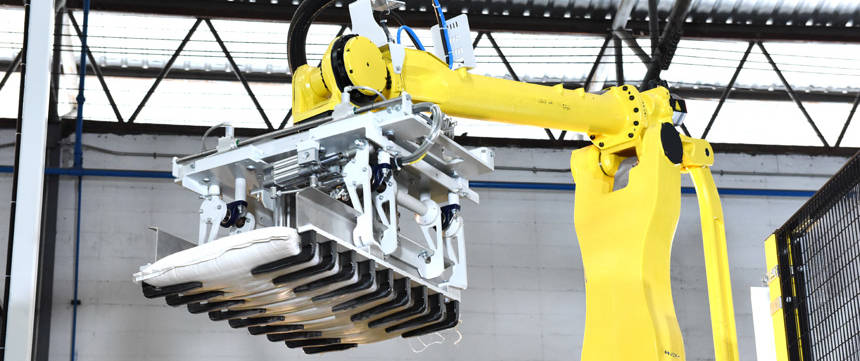4 Myths About Robotics in Your Packaging Line

We often hear about price and other concerns in arguments against robotic solutions. However, such arguments are based on insufficient information and incomplete assessment of ROI. Here’s how to correctly assess what you stand to gain from robotic automation.
MYTH #1: Robots are too expensive
Robots cost less than they did just a few years ago and now are within the financial reach of more manufacturing companies than ever before. Robots allow manufacturing to operate 24 hours a day, 7 days a week with almost no downtime, and open the door to a corresponding increase in output and profit. Automation can be even more profitable for processes involving multiple SKUs because one robot can handle multiple operations simultaneously.
MYTH #2: Robots are unreliable
Robots have earned a reputation for reliability in many industries, from consumer goods to food, chemicals, feed and many others. Depending on the type of robot, its reliability can be determined based on the number of production hours before a theoretical error might occur. This dependability improves accuracy in planning output and scheduling routine preventive maintenance. Process dependability is enhanced because robots are engineered to reach the highest standards of production and sanitation even under extreme conditions.
MYTH #3: Robots are complicated to operate
Robots function reliably in part because their easy-to-operate interfaces do not require operators to be highly skilled. This ease of operation is enhanced by incorporating a human-machine interface (HMI) and a programmable logic controller (PLC), which facilitate the lean automation that augments robots’ inherent ability to increase production efficiency.
MYTH #4: Robots don't benefit plant workers
Robotic equipment is constantly being improved to provide new ways to automate production lines and reduce workplace injury. In addition to protecting employee health through improved safety and ergonomics, automation decreases repetitive-motion injuries as robots relieve employees of repetitive tasks. Robots thereby free employees for reassignment to value-added work, decrease employers’ risk of work-related employee health expense and free manufacturers from the need to replace some of their retiring employees. And for the jobs? While some jobs are slowly being replaced, millions of others are being created by robotics, in fields like engineering, integration and programming.
Need more convincing facts? Here are more indirect benefits of robotics:
- Improved manufacturing flexibility, since reprogramming robots for different projects or using different programs for different production runs is faster and less expensive than retraining employees
- Potential for backlog is reduced because one robot can handle multiple operations simultaneously.
- Need for plant space is reduced because robots can operate in more configurations and in more constrained space than humans.
- Improved planning due to reliable, predictable output
The case for robotics
Although the decision to integrate robots into a manufacturing process includes considering the cost of equipment and automation’s direct benefits, it is important to consider robotics’ indirect benefits as well, in order to determine an accurate ROI. Increased productivity, improved adherence to quality and the improved protection of employee health that automation makes possible are all factors that promote higher ROI.
Automating a manufacturing facility can generate significant savings on multiple levels in both the short and long term. ROI evaluation must take into account not only the short-term cost of adding automation but also long-term strategic planning, in which automation positions a company for competitive advantage.